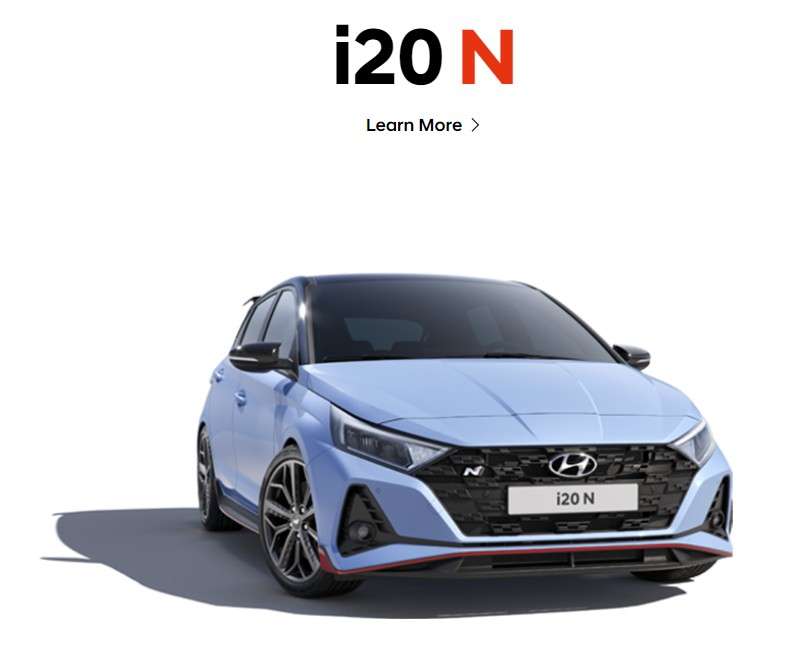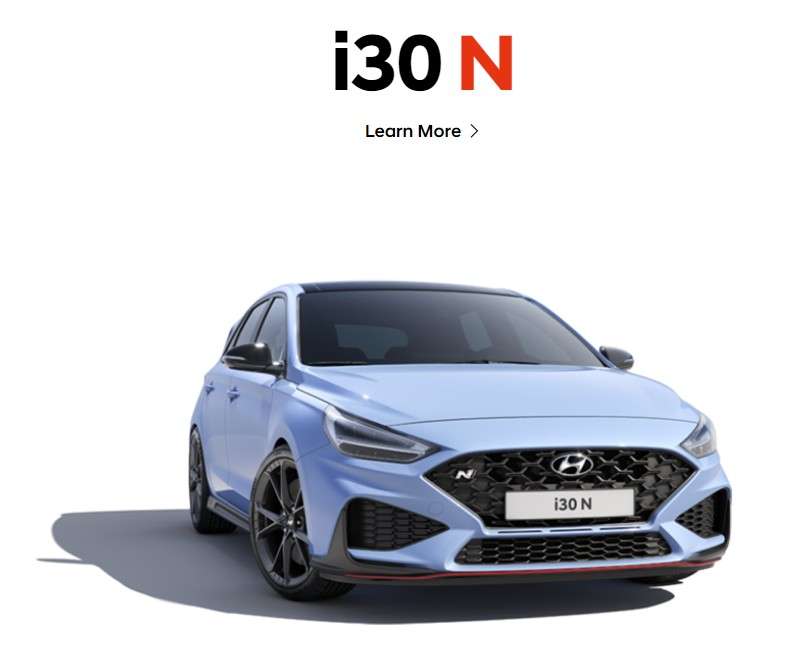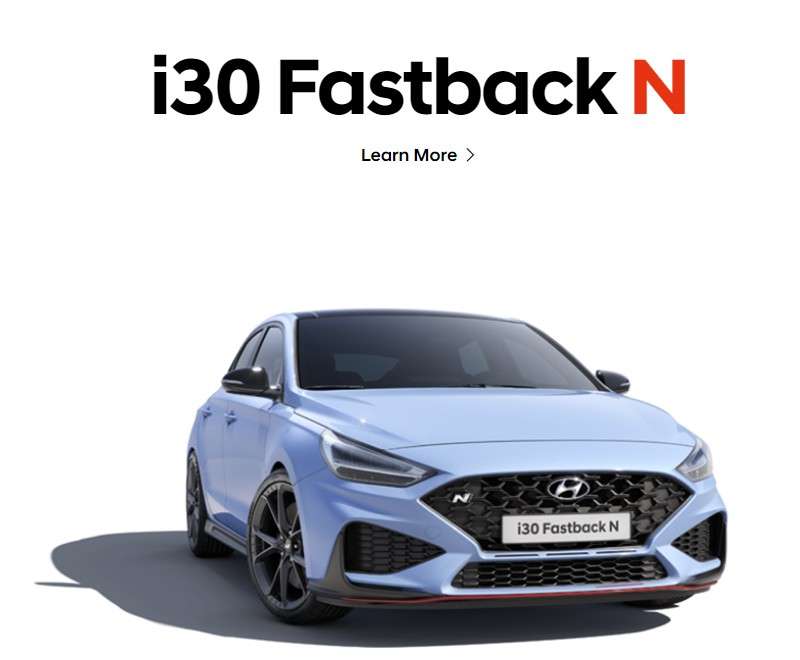VR 헤드셋을 사용한 몰입형 심 레이싱
- VR 심 레이싱 소개
1.1 심 레이싱의 진화
1.2 가상현실(VR)이란 무엇인가?
1.3 VR과 심 레이싱의 결합
1.4 심 레이싱에서 VR의 이점 - 심 레이싱을 위한 적합한 VR 헤드셋 선택하기
2.1 고려해야 할 주요 요소들
2.1.1 해상도와 디스플레이 품질
2.1.2 시야각(FOV)
2.1.3 주사율
2.1.4 편안함과 인체공학
2.1.5 트래킹 기술
2.2 심 레이싱에 인기 있는 VR 헤드셋
2.2.1 오큘러스 리프트 S
2.2.2 HTC 바이브 프로
2.2.3 밸브 인덱스
2.2.4 HP 리버브 G2
2.3 예산 친화적인 옵션들
2.4 미래를 대비한 VR 셋업 - VR 심 레이싱 리그 설정하기
3.1 하드웨어 요구사항
3.1.1 컴퓨터 사양
3.1.2 레이싱 휠과 페달
3.1.3 VR 대응 레이싱 시트
3.2 소프트웨어 설정
3.2.1 VR 드라이버 설치
3.2.2 VR용 심 레이싱 게임 구성
3.3 VR 레이싱 환경 최적화
3.3.1 방 설정 및 공간 고려사항
3.3.2 조명과 환기 - VR 심 레이싱 시작하기
4.1 VR 레이싱에 적응하기
4.1.1 멀미 극복하기
4.1.2 적절한 설정 찾기
4.2 기본적인 VR 컨트롤과 상호작용
4.3 VR 심 레이싱을 위한 모범 사례 - 고급 VR 심 레이싱 기술
5.1 공간 인지력 향상
5.2 더 나은 레이싱 라인을 위한 헤드 무브먼트 활용
5.3 심 레이싱 게임의 VR 특화 기능 마스터하기 - VR을 지원하는 인기 심 레이싱 게임
6.1 아이레이싱(iRacing)
6.2 아세토 코르사(Assetto Corsa)와 아세토 코르사 콤페티치오네(Assetto Corsa Competizione)
6.3 프로젝트 카스 2(Project CARS 2)
6.4 더트 랠리 2.0(DiRT Rally 2.0)
6.5 레이스룸 레이싱 익스피리언스(RaceRoom Racing Experience) - VR 심 레이싱 경험 향상하기
7.1 햅틱 피드백 추가
7.2 모션 플랫폼 통합
7.3 가상 미러와 HUD 사용 - 일반적인 VR 심 레이싱 문제 해결
8.1 성능 최적화
8.2 VR 멀미 감소
8.3 기술적 문제 해결 - 심 레이싱에서 VR의 미래
9.1 향후 VR 기술
9.2 VR 심 레이싱의 잠재적 개선 사항 - 결론
10.1 심 레이싱에 대한 VR의 영향 요약
10.2 VR 심 레이싱에서 성공하기 위한 최종 팁
이제 각 섹션에 대한 자세한 설명을 살펴보겠습니다:
- VR 심 레이싱 소개
가상현실(VR)은 심 레이싱 세계에 혁명을 일으켜 전례 없는 수준의 몰입감과 현실감을 제공합니다. 이 섹션에서는 초기부터 현재의 첨단 기술에 이르기까지 심 레이싱의 진화를 살펴볼 것입니다. 가상현실이 무엇이고 어떻게 작동하는지 정의하며, 이 몰입형 기술의 기본 원리를 설명합니다.
VR과 심 레이싱의 결합은 레이싱 애호가들에게 완전히 새로운 차원을 열어주었습니다. VR이 어떻게 심 레이싱 경험을 향상시키는지 논의하며, 기존의 모니터로는 불가능했던 존재감과 공간 인식을 제공하는 방법을 설명합니다. 심 레이싱에서 VR을 사용할 때의 주요 이점을 배우게 될 것입니다. 여기에는 향상된 깊이 인식, 더 정확한 거리와 속도 판단, 그리고 전반적으로 더 몰입감 있는 경험이 포함됩니다.
실행 항목: 심 레이싱과 VR 기술의 역사를 연구하여 우리가 얼마나 발전했는지 이해하고 현재의 최첨단 기술을 평가해보세요.
- 심 레이싱을 위한 적합한 VR 헤드셋 선택하기
심 레이싱을 위한 완벽한 VR 헤드셋을 선택하는 것은 최적의 경험을 위해 매우 중요합니다. 선택 시 고려해야 할 주요 요소들을 안내해 드리겠습니다:
- 해상도와 디스플레이 품질: 높은 해상도와 더 나은 디스플레이 기술이 어떻게 더 선명한 시각과 스크린도어 효과 감소에 기여하는지 이해합니다.
- 시야각(FOV): 레이싱 시나리오에서 주변 시야를 위해 넓은 FOV가 왜 중요한지 배웁니다.
- 주사율: 높은 주사율이 어떻게 멀미를 줄이고 더 부드러운 시각을 제공하는지 알아봅니다.
- 편안함과 인체공학: 긴 레이싱 세션을 위한 무게 분포, 조절 가능성, 통풍의 중요성을 탐구합니다.
- 트래킹 기술: 다양한 트래킹 방법과 그것이 레이싱 경험에 미치는 영향을 비교합니다.
우리는 심 레이싱에 특히 적합한 인기 있는 VR 헤드셋들을 검토할 것입니다. 오큘러스 리프트 S, HTC 바이브 프로, 밸브 인덱스, HP 리버브 G2 등이 여기에 포함됩니다. 각 헤드셋의 장단점을 논의하여 여러분의 필요와 예산에 맞는 정보에 입각한 결정을 내릴 수 있도록 도와드립니다.
더 타이트한 예산을 가진 분들을 위해, 여전히 훌륭한 VR 레이싱 경험을 제공하는 저렴한 옵션들도 살펴볼 것입니다. 마지막으로, 업그레이드 가능성과 장기적인 지원과 같은 요소들을 고려하여 VR 셋업의 미래를 대비하는 방법에 대해 논의할 것입니다.
실행 항목: 논의된 요소들을 바탕으로 VR 헤드셋 비교 차트를 만들고, 여러분의 심 레이싱 필요에 가장 중요한 기능들의 우선순위를 정하세요.
- VR 심 레이싱 리그 설정하기
적절한 설정은 즐거운 VR 심 레이싱 경험을 위해 필수적입니다. 우리는 하드웨어 요구사항부터 시작할 것입니다:
- 컴퓨터 사양: 레이싱 게임에서 부드러운 VR 성능을 위한 권장 CPU, GPU, RAM 요구사항에 대해 배웁니다.
- 레이싱 휠과 페달: 다양한 휠과 페달 설정이 어떻게 VR 경험을 보완하고 현실감을 높이는지 알아봅니다.
- VR 대응 레이싱 시트: VR 헤드셋 사용에 적합한 편안하고 안정적인 좌석 옵션들을 탐구합니다.
다음으로, VR 드라이버 설치와 인기 있는 심 레이싱 게임을 VR용으로 구성하는 과정을 안내해 드릴 것입니다. 시각적 품질과 성능의 균형을 맞추기 위한 게임 설정 최적화 팁과 요령을 배우게 될 것입니다.
또한 방 설정, 공간 요구사항, 조명, 환기와 같은 요소들을 고려하여 물리적 레이싱 환경을 최적화하는 방법에 대해 논의할 것입니다. 이러한 요소들은 장시간의 VR 레이싱 세션 동안 편안함과 안전을 위해 매우 중요합니다.
실행 항목: 현재 설정을 평가하고 VR 심 레이싱을 준비하기 위해 필요한 업그레이드나 수정 사항들의 체크리스트를 만드세요.
- VR 심 레이싱 시작하기
전통적인 모니터 레이싱에서 VR로의 전환은 도전적일 수 있습니다. 우리는 VR 레이싱에 적응하기 위한 전략을 제공할 것입니다. 여기에는 멀미를 극복하고 여러분의 편안함과 성능을 위한 적절한 설정을 찾는 팁들이 포함됩니다.
메뉴 탐색, 좌석 위치 조정, VR 컨트롤러나 레이싱 휠을 사용한 게임 내 요소들과의 상호작용 등 심 레이싱에 특화된 기본적인 VR 컨트롤과 상호작용에 대해 배우게 될 것입니다.
우리는 적절한 자세, 정기적인 휴식, 최적의 성능과 수명을 위한 VR 장비 유지관리 등 VR 심 레이싱을 위한 모범 사례를 공유할 것입니다.
실행 항목: 짧은 VR 레이싱 세션으로 시작하여 점차적으로 더 편안해짐에 따라 기간을 늘려가세요. 여러분의 경험과 마주치는 문제들을 기록해두세요.
- 고급 VR 심 레이싱 기술
기본을 익히고 나면, VR에서 레이싱 성능을 향상시킬 수 있는 고급 기술들을 탐구할 시간입니다:
- 공간 인지력 향상: 증가된 시야각과 깊이 인식을 활용하여 타이트한 레이싱 상황에서 이점을 얻는 방법을 배웁니다.
- 더 나은 레이싱 라인을 위한 헤드 무브먼트 활용: 자연스러운 머리 움직임이 어떻게 정점을 발견하고 레이싱 라인을 최적화하는 데 도움이 되는지 알아봅니다.
- VR 특화 기능 마스터하기: 다양한 심 레이싱 게임의 독특한 VR 기능들과 그것들을 더 나은 성능을 위해 활용하는 방법을 탐구합니다.
우리는 이러한 기술들을 개발하고 여러분의 VR 심 레이싱을 한 단계 높이는 데 도움이 되는 실용적인 연습과 훈련을 제공할 것입니다.
실행 항목: 레이스 상황에 적용하기 전에 빈 트랙과 같은 통제된 환경에서 특정 VR 기술들을 연습해보세요.
- VR을 지원하는 인기 심 레이싱 게임
우리는 뛰어난 VR 지원을 제공하는 가장 인기 있는 심 레이싱 게임들을 살펴볼 것입니다:
- 아이레이싱(iRacing): 경쟁적인 온라인 레이싱과 레이저 스캔된 트랙으로 유명합니다.
- 아세토 코르사(Assetto Corsa)와 아세토 코르사 콤페티치오네(Assetto Corsa Competizione): 현실적인 물리 엔진과 광범위한 모드 지원으로 높은 평가를 받고 있습니다.
- 프로젝트 카스 2(Project CARS 2): 다양한 모터스포츠 분야와 동적 날씨 시스템을 제공합니다.
- 더트 랠리 2.0(DiRT Rally 2.0): 도전적인 VR 경험을 찾는 랠리 애호가들을 위한 최고의 선택입니다.
- 레이스룸 레이싱 익스피리언스(RaceRoom Racing Experience): 독특한 트랙과 차량 선택, 그리고 안정적인 VR 구현이 특징입니다.
각 게임에 대해 VR 구현의 강점, 최적의 VR 성능을 위한 특정 설정이나 조정 사항, 그리고 제공하는 레이싱 경험의 유형에 대해 논의할 것입니다.
실행 항목: 이 게임들의 데모 버전이나 무료 체험 기간을 활용하여 어떤 게임이 여러분의 취향에 맞고 VR 셋업에서 잘 작동하는지 확인해보세요.
- VR 심 레이싱 경험 향상하기
VR 심 레이싱을 한 단계 더 높은 수준으로 끌어올리기 위해, 추가적인 개선 사항들을 살펴볼 것입니다:
- 햅틱 피드백 추가: 몰입감을 높이고 귀중한 촉각 정보를 제공할 수 있는 다양한 햅틱 피드백 솔루션에 대해 알아봅니다.
- 모션 플랫폼 통합: 모션 플랫폼이 어떻게 G-포스와 차량 움직임을 시뮬레이션하여 더욱 현실적인 경험을 제공할 수 있는지 살펴봅니다.
- 가상 미러와 HUD 사용: VR 레이싱 환경에서 사용자 지정 가능한 가상 미러와 헤드업 디스플레이의 이점을 탐구합니다.
각 개선 사항의 장단점을 논의하여 여러분의 특정 셋업과 레이싱 목표에 어떤 업그레이드가 가치 있는 투자인지 결정하는 데 도움을 줄 것입니다.
실행 항목: 잠재적인 개선 사항들을 연구하고 가격을 비교해보세요. 레이싱 경험에 미치는 영향과 예산 제약을 고려하여 우선순위를 정한 위시리스트를 만드세요.
- 일반적인 VR 심 레이싱 문제 해결
최고의 셋업에서도 문제가 발생할 수 있습니다. 우리는 일반적인 문제와 그 해결책을 다룰 것입니다:
- 성능 최적화: VR 레이싱 게임에서 프레임률을 개선하고 끊김 현상을 줄이기 위한 팁들을 제공합니다.
- VR 멀미 감소: 긴 레이싱 세션 동안 불편함과 메스꺼움을 최소화하는 전략을 소개합니다.
- 기술적 문제 해결: 심 레이싱에서 발생하는 일반적인 VR 관련 문제들에 대한 문제 해결 가이드를 제공합니다.
이러한 잠재적인 문제들과 그 해결책을 이해함으로써, 여러분은 발생할 수 있는 모든 문제들을 더 잘 처리할 수 있게 되어 원활하고 즐거운 VR 레이싱 경험을 보장할 수 있습니다.
실행 항목: 제공된 정보를 바탕으로 문제 해결 체크리스트를 만들어 문제가 발생했을 때 빠르게 참조할 수 있도록 하세요.
- 심 레이싱에서 VR의 미래
VR 세계는 끊임없이 진화하고 있으며, 심 레이싱은 이러한 발전의 최전선에 있습니다. 심 레이싱에 혁명을 일으킬 수 있는 향후 VR 기술들을 탐구할 것입니다:
- 더 높은 해상도 디스플레이
- 더 넓은 시야각
- 시선 추적 기술
- 개선된 햅틱 피드백
- 무선 VR 솔루션
이러한 기술들이 심 레이싱 경험에 어떤 영향을 미칠 수 있는지, 그리고 앞으로 몇 년 동안 무엇을 기대할 수 있는지 논의할 것입니다.
실행 항목: 관련 기술 뉴스 소스와 심 레이싱 커뮤니티를 팔로우하여 VR 발전 상황을 계속 파악하세요.
- 결론
결론에서는 VR이 심 레이싱에 미친 변혁적인 영향을 요약하며, 이 취미를 새로운 수준의 현실감과 몰입감으로 끌어올렸음을 강조할 것입니다. VR 심 레이싱에서 성공하기 위한 최종 팁들을 제공하면서, 여러분이 정기적으로 연습하고, 최신 발전 상황을 계속 파악하며, VR 심 레이싱 커뮤니티와 교류할 것을 권장합니다.
실행 항목: VR 심 레이싱 여정을 위한 개인적인 목표를 설정하고, 이 가이드를 통해 배운 지식과 기술을 활용하여 그 목표를 달성하기 위한 계획을 세우세요.
이 상세한 가이드는 여러분이 VR 심 레이싱의 세계에 깊이 몰입하고, 기술을 향상시키며, 궁극적으로 더 몰입감 있고 즐거운 레이싱 경험을 할 수 있도록 도와줄 것입니다. VR 기술이 계속 발전함에 따라, 심 레이싱의 미래는 더욱 흥미진진해질 것입니다. 행운을 빕니다, 그리고 즐거운 레이싱 되세요!
Using VR Headsets for Immersive Sim Racing
- Introduction to VR in Sim Racing
1.1 The Evolution of Sim Racing
1.2 What is Virtual Reality?
1.3 The Marriage of VR and Sim Racing
1.4 Benefits of VR in Sim Racing - Choosing the Right VR Headset for Sim Racing
2.1 Key Factors to Consider
2.1.1 Resolution and Display Quality
2.1.2 Field of View (FOV)
2.1.3 Refresh Rate
2.1.4 Comfort and Ergonomics
2.1.5 Tracking Technology
2.2 Popular VR Headsets for Sim Racing
2.2.1 Oculus Rift S
2.2.2 HTC Vive Pro
2.2.3 Valve Index
2.2.4 HP Reverb G2
2.3 Budget-Friendly Options
2.4 Future-Proofing Your VR Setup - Setting Up Your VR Sim Racing Rig
3.1 Hardware Requirements
3.1.1 Computer Specifications
3.1.2 Racing Wheel and Pedals
3.1.3 VR-Ready Racing Seat
3.2 Software Setup
3.2.1 Installing VR Drivers
3.2.2 Configuring Sim Racing Games for VR
3.3 Optimizing Your VR Racing Environment
3.3.1 Room Setup and Space Considerations
3.3.2 Lighting and Ventilation - Getting Started with VR Sim Racing
4.1 Adjusting to VR Racing
4.1.1 Overcoming Motion Sickness
4.1.2 Finding the Right Settings
4.2 Basic VR Controls and Interactions
4.3 Best Practices for VR Sim Racing - Advanced VR Sim Racing Techniques
5.1 Improving Spatial Awareness
5.2 Utilizing Head Movement for Better Racing Lines
5.3 Mastering VR-Specific Features in Sim Racing Games - Popular Sim Racing Games with VR Support
6.1 iRacing
6.2 Assetto Corsa and Assetto Corsa Competizione
6.3 Project CARS 2
6.4 DiRT Rally 2.0
6.5 RaceRoom Racing Experience - Enhancing Your VR Sim Racing Experience
7.1 Adding Haptic Feedback
7.2 Incorporating Motion Platforms
7.3 Using Virtual Mirrors and HUDs - Troubleshooting Common VR Sim Racing Issues
8.1 Performance Optimization
8.2 Reducing VR Sickness
8.3 Dealing with Technical Glitches - The Future of VR in Sim Racing
9.1 Upcoming VR Technologies
9.2 Potential Improvements in VR Sim Racing - Conclusion
10.1 Recap of VR’s Impact on Sim Racing
10.2 Final Tips for Success in VR Sim Racing
Now, let’s dive into a detailed description of each section:
- Introduction to VR in Sim Racing
Virtual Reality (VR) has revolutionized the world of sim racing, offering an unprecedented level of immersion and realism. In this section, we’ll explore the evolution of sim racing from its early days to the cutting-edge technology we have today. We’ll define what Virtual Reality is and how it works, explaining the basic principles behind this immersive technology.
The marriage of VR and sim racing has created a whole new dimension for racing enthusiasts. We’ll discuss how VR enhances the sim racing experience, providing a sense of presence and spatial awareness that was previously impossible with traditional monitors. You’ll learn about the key benefits of using VR in sim racing, including improved depth perception, more accurate judgment of distances and speeds, and a more engaging overall experience.
Action item: Research the history of sim racing and VR technology to understand how far we’ve come and appreciate the current state of the art.
- Choosing the Right VR Headset for Sim Racing
Selecting the perfect VR headset for sim racing is crucial for an optimal experience. We’ll guide you through the key factors to consider when making your choice:
- Resolution and display quality: Understand how higher resolutions and better display technologies contribute to clearer visuals and reduced screen-door effect.
- Field of View (FOV): Learn why a wider FOV is essential for peripheral vision in racing scenarios.
- Refresh rate: Discover how higher refresh rates reduce motion sickness and provide smoother visuals.
- Comfort and ergonomics: Explore the importance of weight distribution, adjustability, and ventilation for long racing sessions.
- Tracking technology: Compare different tracking methods and their impact on your racing experience.
We’ll review popular VR headsets specifically suited for sim racing, such as the Oculus Rift S, HTC Vive Pro, Valve Index, and HP Reverb G2. Each headset’s pros and cons will be discussed, helping you make an informed decision based on your needs and budget.
For those on a tighter budget, we’ll explore more affordable options that still provide a great VR racing experience. Lastly, we’ll discuss future-proofing your VR setup, considering factors like upgradeability and long-term support.
Action item: Create a comparison chart of VR headsets based on the factors discussed, and prioritize which features are most important for your sim racing needs.
- Setting Up Your VR Sim Racing Rig
A proper setup is essential for an enjoyable VR sim racing experience. We’ll start by covering the hardware requirements:
- Computer specifications: Learn about the recommended CPU, GPU, and RAM requirements for smooth VR performance in racing games.
- Racing wheel and pedals: Discover how different wheel and pedal setups complement the VR experience and enhance realism.
- VR-ready racing seat: Explore options for comfortable, stable seating that accommodates VR headset usage.
Next, we’ll guide you through the software setup process, including installing VR drivers and configuring popular sim racing games for VR use. You’ll learn tips and tricks for optimizing game settings to balance visual quality and performance.
We’ll also discuss how to optimize your physical racing environment, considering factors like room setup, space requirements, lighting, and ventilation. These elements are crucial for comfort and safety during extended VR racing sessions.
Action item: Assess your current setup and create a checklist of necessary upgrades or modifications to prepare for VR sim racing.
- Getting Started with VR Sim Racing
Transitioning from traditional monitor racing to VR can be challenging. We’ll provide strategies for adjusting to VR racing, including tips for overcoming motion sickness and finding the right settings for your comfort and performance.
You’ll learn about basic VR controls and interactions specific to sim racing, such as how to navigate menus, adjust your seating position, and interact with in-game elements using VR controllers or your racing wheel.
We’ll share best practices for VR sim racing, including proper posture, taking regular breaks, and maintaining your VR equipment for optimal performance and longevity.
Action item: Start with short VR racing sessions and gradually increase duration as you become more comfortable. Keep a log of your experiences and any issues you encounter.
- Advanced VR Sim Racing Techniques
Once you’re comfortable with the basics, it’s time to explore advanced techniques that can improve your racing performance in VR:
- Improving spatial awareness: Learn how to use the increased field of view and depth perception to your advantage in tight racing situations.
- Utilizing head movement for better racing lines: Discover how natural head movements can help you spot apex points and optimize your racing lines.
- Mastering VR-specific features: Explore unique VR features in various sim racing games and how to leverage them for better performance.
We’ll provide practical exercises and drills to help you develop these skills and take your VR sim racing to the next level.
Action item: Practice specific VR techniques in a controlled environment, such as an empty track, before applying them in race situations.
- Popular Sim Racing Games with VR Support
We’ll review some of the most popular sim racing games that offer excellent VR support:
- iRacing: Known for its competitive online racing and laser-scanned tracks.
- Assetto Corsa and Assetto Corsa Competizione: Praised for their realistic physics and extensive mod support.
- Project CARS 2: Offers a wide variety of motorsports disciplines and dynamic weather.
- DiRT Rally 2.0: The go-to choice for rally enthusiasts looking for a challenging VR experience.
- RaceRoom Racing Experience: Features a unique selection of tracks and cars with solid VR implementation.
For each game, we’ll discuss the strengths of their VR implementation, any specific settings or tweaks for optimal VR performance, and the types of racing experiences they offer.
Action item: Try demo versions or free weekends of these games to determine which ones suit your preferences and perform well with your VR setup.
- Enhancing Your VR Sim Racing Experience
To take your VR sim racing to the next level, we’ll explore additional enhancements:
- Adding haptic feedback: Learn about various haptic feedback solutions that can increase immersion and provide valuable tactile information.
- Incorporating motion platforms: Discover how motion platforms can simulate g-forces and car movement for an even more realistic experience.
- Using virtual mirrors and HUDs: Explore the benefits of customizable virtual mirrors and heads-up displays in VR racing environments.
We’ll discuss the pros and cons of each enhancement, helping you decide which upgrades are worth the investment for your particular setup and racing goals.
Action item: Research and price out potential enhancements, creating a wishlist prioritized by impact on your racing experience and budget constraints.
- Troubleshooting Common VR Sim Racing Issues
Even with the best setup, you may encounter issues. We’ll address common problems and their solutions:
- Performance optimization: Tips for improving frame rates and reducing stuttering in VR racing games.
- Reducing VR sickness: Strategies to minimize discomfort and nausea during long racing sessions.
- Dealing with technical glitches: Troubleshooting guide for common VR-related issues in sim racing.
By understanding these potential problems and their solutions, you’ll be better prepared to handle any issues that arise, ensuring a smooth and enjoyable VR racing experience.
Action item: Create a troubleshooting checklist based on the information provided, so you have a quick reference guide when issues occur.
- The Future of VR in Sim Racing
The world of VR is constantly evolving, and sim racing is at the forefront of these advancements. We’ll explore upcoming VR technologies that could revolutionize sim racing, such as:
- Higher resolution displays
- Wider field of view
- Eye-tracking technology
- Improved haptic feedback
- Wireless VR solutions
We’ll discuss how these technologies might impact the sim racing experience and what to look forward to in the coming years.
Action item: Stay informed about VR advancements by following relevant tech news sources and sim racing communities.
- Conclusion
In the conclusion, we’ll recap the transformative impact of VR on sim racing, emphasizing how it has elevated the hobby to new heights of realism and immersion. We’ll provide final tips for success in VR sim racing, encouraging you to practice regularly, stay up-to-date with the latest developments, and engage with the VR sim racing community.
Action item: Set personal goals for your VR sim racing journey and create a plan to achieve them, incorporating the knowledge and techniques learned throughout this guide.










